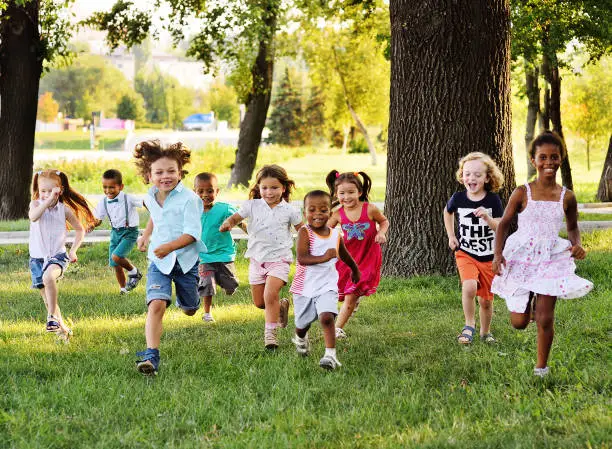Physical Development: Monitoring Milestones

In early childhood, growth is the "G" in the GREATEST roadmap, and this is not just about getting taller or gaining weight. It encompasses the child’s holistic development, including physical capabilities built through playful means. Physical development lays the groundwork for children’s overall functioning, affecting how they explore their environment, relate to peers, gain independence, and build healthy habits. As young children play, their bodies are in motion, and this movement is essential for meeting developmental milestones.
Understanding What’s Typical and When to Be Concerned
Developmental milestones serve as helpful benchmarks, guiding parents and practitioners in understanding typical growth patterns of cognitive, language, emotional, social, and physical development. By one year, most children pull themselves to an upright position and may begin walking. By two, they often run and climb, and by three, they usually jump, balance, and pedal a tricycle. By four and five years, they transition to more refined skills as skipping, galloping, and balancing on narrow surfaces become noticeable.
However, variations do occur. Some children reach these milestones slightly earlier or later than others. What matters is a general pattern of progress. Delays may appear subtle at first, like a child who avoids rough-and-tumble play or resists climbing stairs, but they deserve close attention. Persistent lags can be a signal that the child may benefit from extra support.
Recognizing Developmental Delays Through Play
Play affords a natural setting to observe a child's physical development. For example, a child who avoids pushing a ride-on toy or has trouble catching a soft ball may be struggling with gross motor skills. A child who cannot string beads or draw simple shapes may have difficulties with fine motor coordination.
Signs to watch for include:
- Hesitancy in climbing or jumping
- Repeated tripping or poor balance
- Difficulty grasping small items
- Fatigue during active play
These behaviors, if consistent and persistent, may indicate a need for further evaluation and early intervention.
Using Play to Track Progress on Physical Milestones
Because children are more engaged when they're having fun, play provides an ideal context for both monitoring and promoting development. Caregivers can gently challenge children with the following age-appropriate physical activities:
Ages 1–2 Years (Toddlers):
- Push-and-pull toys for walking and balance
- Crawling through soft tunnels or over cushions
- Rolling and kicking balls
- Dancing to music
- Climbing low furniture with supervision
Ages 2–3 Years:
- Simple obstacle courses using pillows and boxes
- Jumping in place or over small objects
- Throwing objects, like beanbags, into buckets
- Riding toys without pedals
- Stacking large blocks
Ages 3–4 Years:
- Hopscotch or jumping between drawn shapes
- Climbing low jungle gyms or play structures
- Walking on a line taped to the floor for balance
- Catching and throwing larger balls
- Dancing with scarves or ribbons
Ages 4–5 Years:
- Skipping or galloping short distances
- Playing “Follow the Leader” with varied movements
- Riding a tricycle or scooter
- Practicing beginner jump rope movements
- Stretching or trying child-friendly yoga poses
By noting what children can do and how they do it, adults gain insight into their progress. Keeping records—like brief journal entries, annotated photos, or short videos—can help caregivers identify developmental trends and respond proactively.
A growing body of research supports this approach. According to the American Academy of Pediatrics, play not only builds physical skills but also enables parents and other caregivers to identify subtle delays early, improving long-term developmental outcomes¹.
When to Consult a Pediatrician or Physical Therapist
While variation is normal, certain red flags suggest that it’s time to seek professional guidance:
- No independent sitting by 9 months
- No walking by 18 months
- Extreme clumsiness or avoidance of movement by age 3
- Trouble with hand coordination or manipulating simple tools
Pediatricians can conduct developmental screenings and refer families to a physical therapist if necessary. Early intervention can make a significant difference in helping children catch up and thrive.
Looking Ahead: Social and Emotional Growth Through Play
As we close the physical development section of the GREATEST roadmap, we prepare to shift focus to another essential aspect of growth: emotional development. Just as physical skills unfold through playful activity, so too do empathy, cooperation, and self-regulation. In our next segment, we will explore how play becomes a powerful tool in shaping the emotional life of young children and the situations that hinder this development.
Footnote
¹American Academy of Pediatrics. (2018). The power of play: A pediatric role in enhancing development in young children. Pediatrics, 142(3), e20182058. https://doi.org/10.1542/peds.2018-2058